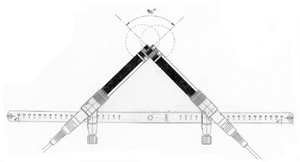Not many of us get exposure a large palette of microphones, to compare apples to apples. How would you like a chance to do that in a real-world environment...a church? This month I am doing exactly that.
May 13th-17th, at Eastland Baptist Church, Tulsa, OK, I will be recording a 70-voice choir, grand piano, acoustic guitars, etc.. I will be using approximately 20 mics from various manufacturers. These include Shure, Audio Technica, Rode, ADK, Audix, and vintage Neumann. The mics will be set up as close to the same positions as possible, so that you may listen and compare MP3's of each pair of mics. That's right. there will be a full review and MP3's to listen to in June. My goal is to show you what the differences are in these mics, their strengths, their weaknesses, how they will hold up, etc. No matter what your budget or application, I am sure that you will read about, and listen to, a mic that will work for you.
The sessions will be recorded on my Digidesign Pro Tools HD mobile system, at 24-bit/96kHz. All of the mics will use the same type of preamp, Digidesign PRE. This will ensure a fair evaluation. To find out more about my system, visit www.homepage.mac.com/brenthandy/ and www.digidesign.com.
Below is information on the microphone techniques that will be used. These are not the only options. But, for the sake of time and my sanity, I had to decide on a few that were the most common. Each technique has advantages and disadvantages, as do all microphones. Hopefully you will hear a combination that sounds good to you, and then apply this information.

A-B Stereo Technique, or Time Difference Stereo.
This technique introduces differences in the time or phase of the source, just as the human head/hearing system does. The recommended spacing is 40 to 60 cm, or one quarter of the wavelength of the deepest tone. It is really unnecessary to space the mics to capture anything below 150Hz, as those frequencies are omni-directional.

Coincidence Stereo.
This technique involves two microphone capsules being placed at the same point, with the mics at 90 degree angles. The mics used here are directional. The off-axis rejection of the mics benefit the stereo imaging.
Blumlein Stereo (Variation of the Coincidence Stereo technique).
This technique requires the same positioning as above, but exchanges directional mics for bi-directional mics. This is good for shorter distances, as bi-directional mic's loose low-end over distance.
Mid/Side (M/S) Stereo (Variation of the Coincidence Stereo technique).
M/S requires one cardioid mic as the center, and one figure eight mic as the side-surround. The pan control then gives you the ability to widen the stereo image, or collapse it to mono. This requires a matrix to compensate for the phasing, to get stereo output.
X/Y Stereo (Variation of the Coincidence Stereo technique).
This technique uses to cardioid mics, in the Coincident configuration. Widening the angle to 120-130 degrees increases the stereo image, but leaves a hole in the center. This is sometimes useful. Opening the angle to 180 degrees simulate binaural hearing. The stereo image is dependent upon the off-axis rejection of the mics.

ORTF Stereo.
This technique uses two cardioid mics, with the capsules spaced 17 cm apart, and angled 110 degrees. This system reproduces wide imaging, similar to the human hearing system. The best distance is close to the source, as the mics have reduced low-end at a distance.
Be sure and check back next month for the written review of the mics and MP3 samples!
Special thanks go to one of the world's most respected, high-end, microphone manfacturers, DPA Microphones. DPA provides the audio, hearing health and testing industries with some of the most accurate microphones known to man. DPA is the only manufacturer that has information and history on nearly all standardized microphone techniques. Some manufacturers have no information, Some manufacturers tell you how to use their specific models and that is all. All pale in comparison to DPA's site!To view more information about DPA, and microphone techniques, please visit www.dpamicrophones.com.

 Experiencing Worship, The Study
Experiencing Worship, The Study